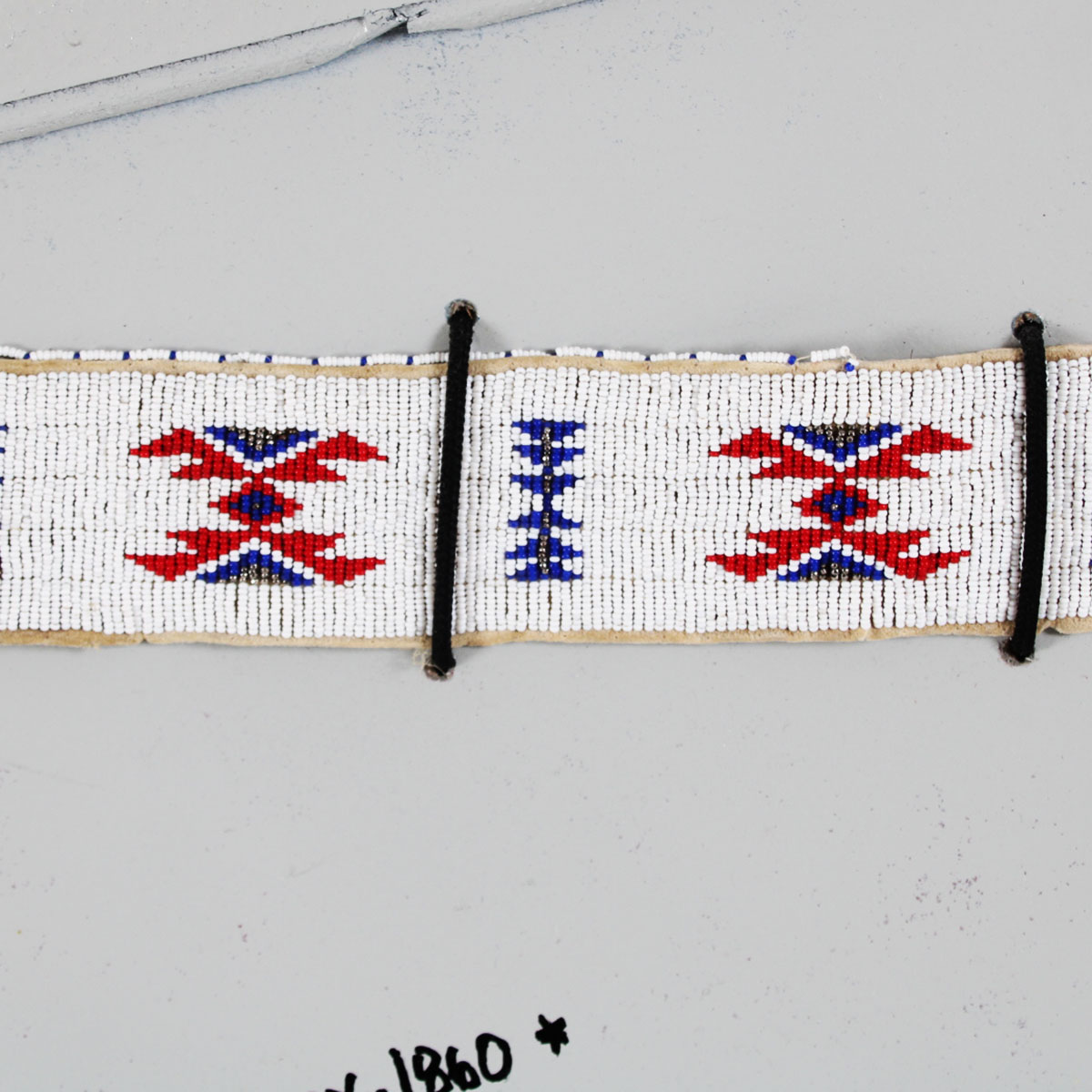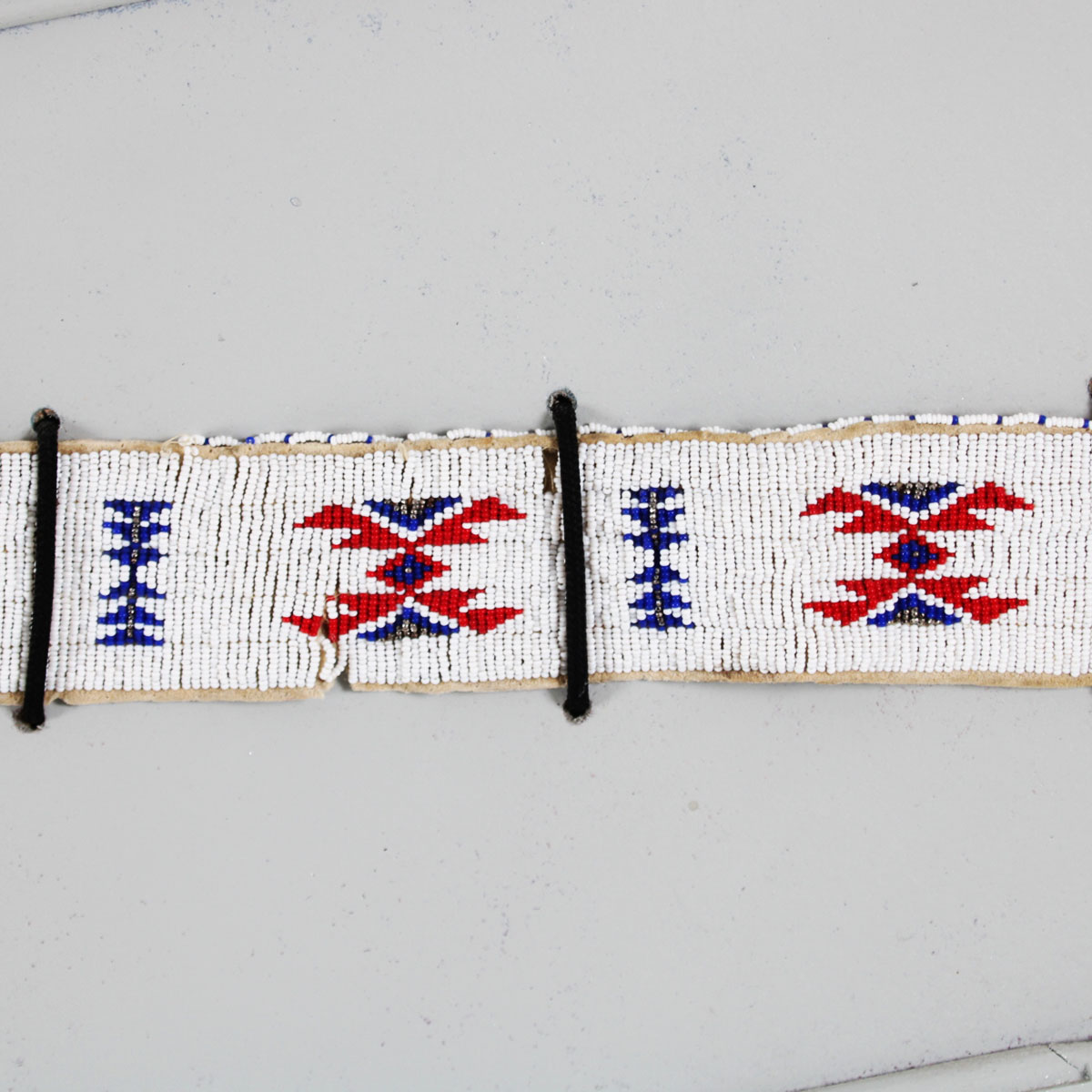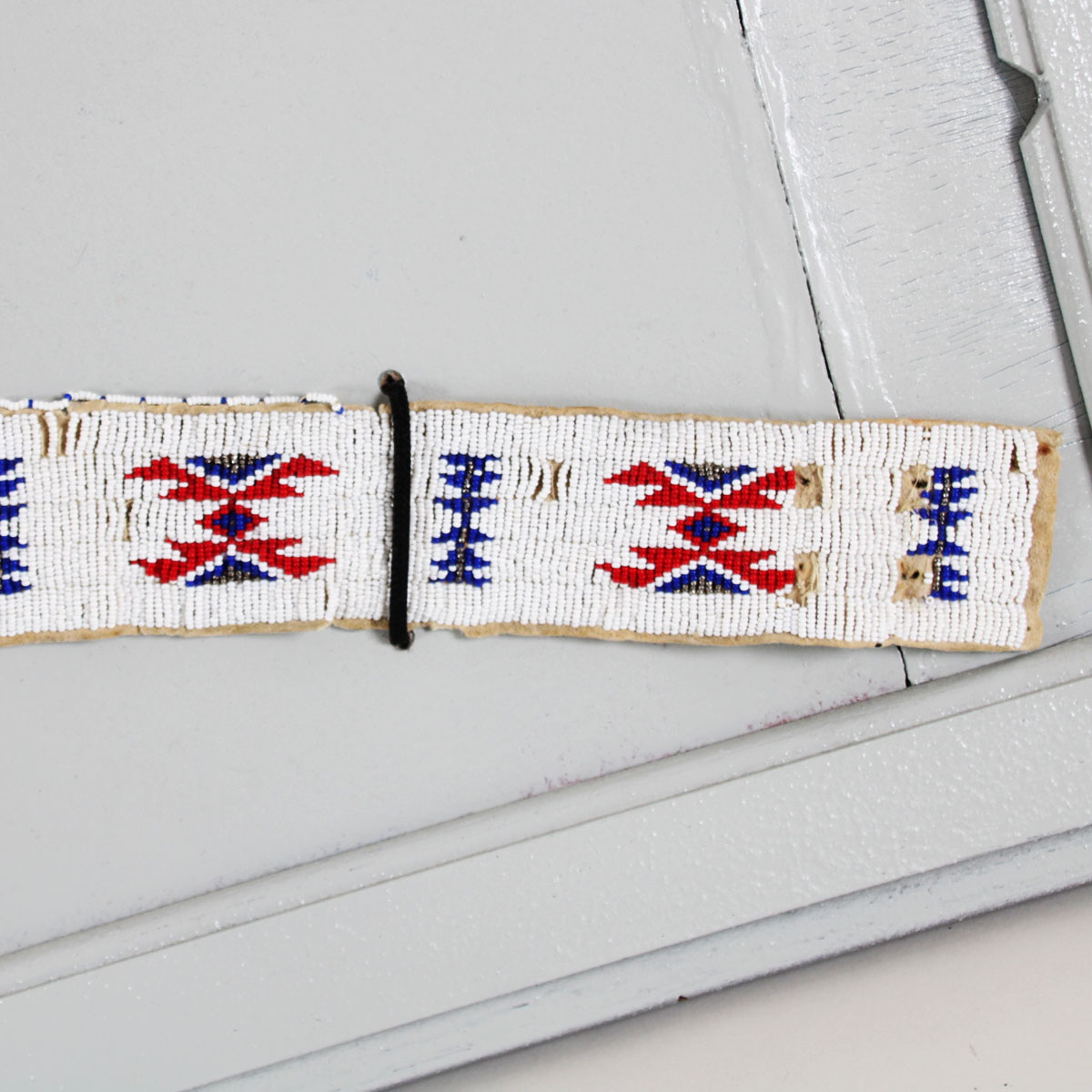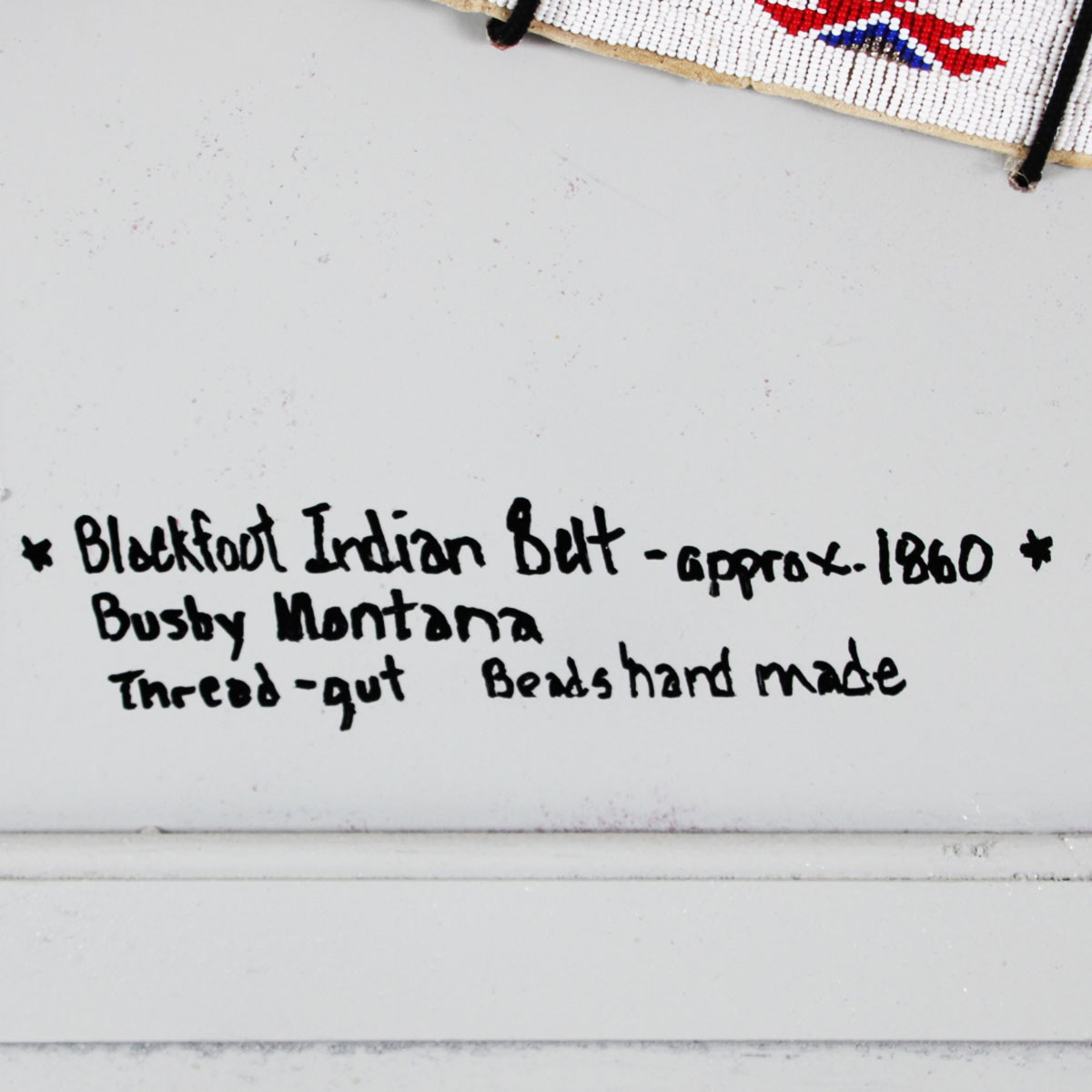- Selection Required: Select product options above before making new offer.
- Offer Sent! Your offer has been received and will be processed as soon as possible.
- This popup will automatically close in 5 seconds.
- Error: There was an error sending your offer, please try again. If this problem persists, please contact us.
Native American Indian Belt Blackfoot Hand Made Beaded Deer Skin Hide 1860’s Display
$1,500.00
Units Sold: 0
Availability: In stock
Presented is a rare vintage 1860’s Native American Indian Blackfoot beaded belt. The beads are hand made individually and placed in a geometric pattern. Using the long tubular beads (red, white, blue and black), they are patterned in a way that is both remarkable and intricate. The belt is also composed of deer hide and a metal fastener at the end. The belt originates out of Busby, Montana via an Administrator of the Blackfoot, Mickey Sellage.
The belt length itself measures 34.5″ (with buckle – 2.25″ width) with it placed in the display at total 14.75″ x 40″. There are some provenance notations on the display in black felt tip.
Blackfoot, also called Blackfeet, North American Indian tribe composed of three closely related bands, the Piegan (officially spelled Peigan in Canada), or Piikuni; the Blood, or Kainah (also spelled Kainai, or Akainiwa); and the Siksika, or Blackfoot proper (often referred to as the Northern Blackfoot). The three groups traditionally lived in what is now Alberta, Canada, and the U.S. state of Montana, and there they remain, with one reservation in Montana and three reserves (as they are called in Canada), one for each band, within Alberta. The Blackfoot in the United States are officially known as the Blackfeet Nation.
All displays are sold as is without warranty to the condition of the frame. This item is oversized/heavy and may incur a shipping surcharge.
Native American Indian Belt Blackfoot Hand Made Beaded Deer Skin Hide
| Weight | 10 lbs |
|---|
You must be logged in to post a review.
Related products
-
Americana
General Braddock Brewing Rooney’s Vintage Beer Cap & Advertisement
SKU: 382541-bw1
$65.00 Add to cartRated 0 out of 5 -
December 10, 2022
Marvel Comics Model Kit Storm X-Men Level 2 1996 Sealed Toy Biz
SKU: 384621-124
$55.00 Add to cartRated 0 out of 5 -
December 10, 2022
The Original X-Men Toy Marvel Collector Edition Toybiz Action Figure Box Set 1997
SKU: 384633-121
$90.00 Add to cartRated 0 out of 5
Recently Viewed Products
-
Soccer
Lionel Messi Signed Facsimile Photo Display 2022 FIFA World Cup Champions
SKU: 43652-dis
$750.00 Read moreRated 0 out of 5 -
Hockey
Mark Messier Signed Photo 16×20 Rangers – COA JSA
SKU: 140563-118
$125.00 Read moreRated 0 out of 5 -
Baseball
Don Larsen & Phil Rizzuto Signed Baseball Yankees – COA
SKU: 308803-dis
$27.50 Add to cartRated 0 out of 5 -
Sports Cards
1997 Stadium Club Derek Jeter Graded Card #55 Matrix – PSA 10
SKU: 72807-dis
$100.00 Read moreRated 0 out of 5 -
Sports Cards
Modern NBA Basketball & NFL Football Card Lot (55) Jason Kidd RC, Philip Rivers RC, Tom Brady etc.
SKU: 337498-bw4
$175.00 Read moreRated 0 out of 5 -
Baseball
1997 Jose Cardenal Game-Worn Jersey Yankees
SKU: 366757-45
Sold for: $375.00 Auction finishedRated 0 out of 5 -
Football
Patrick Mahomes Signed Football Chiefs ONFL – COA JSA
SKU: 76403-55
$750.00 Read moreRated 0 out of 5































































Reviews
There are no reviews yet.